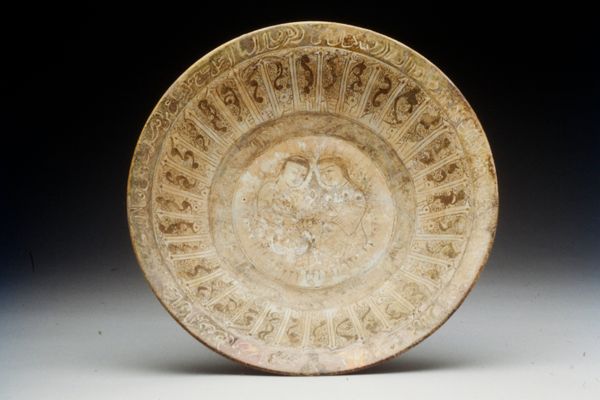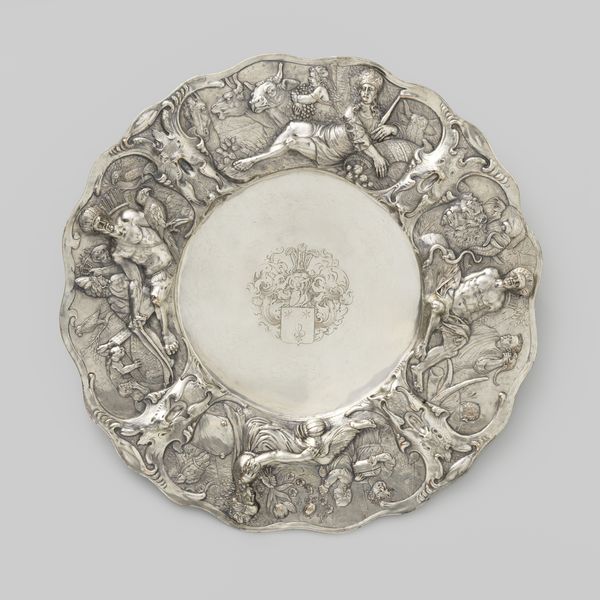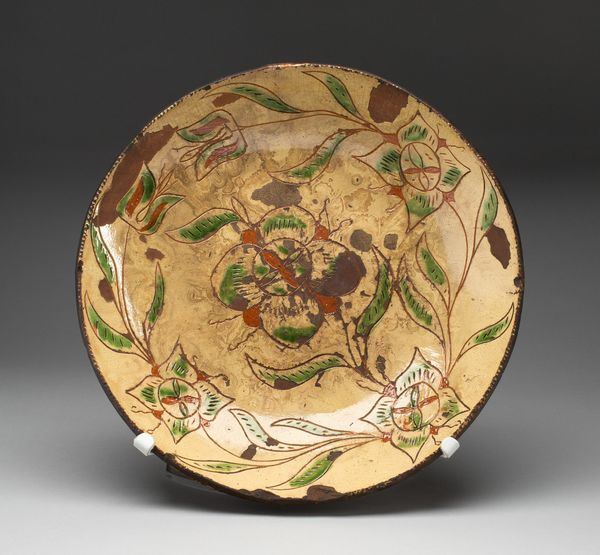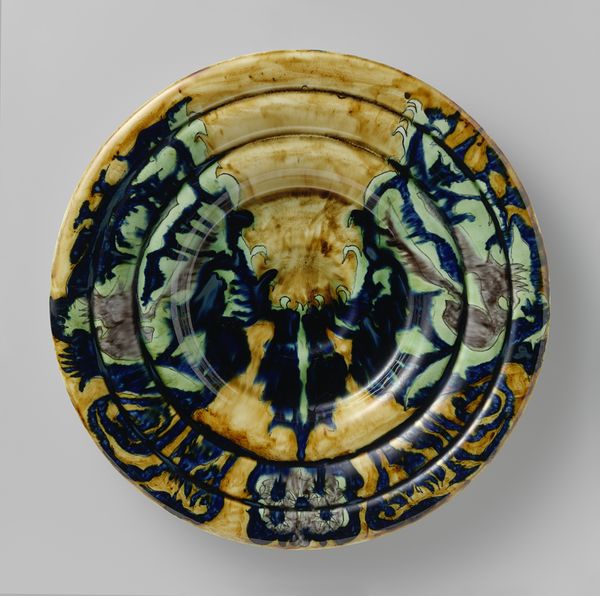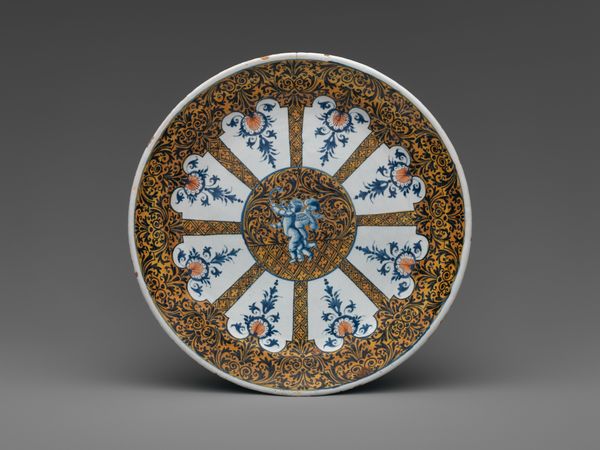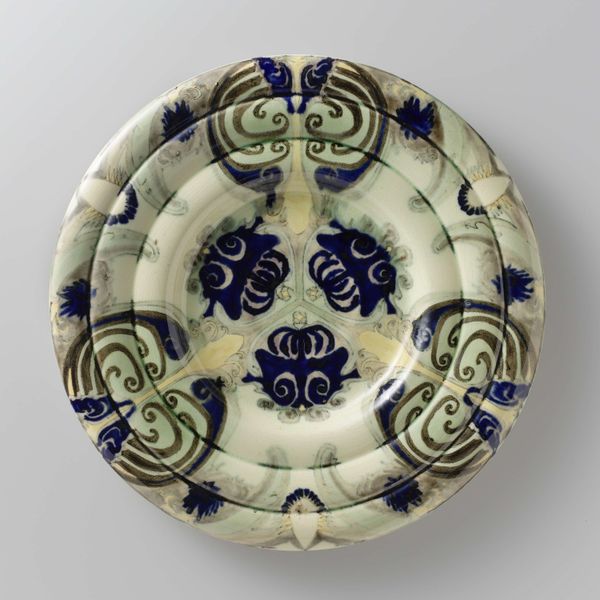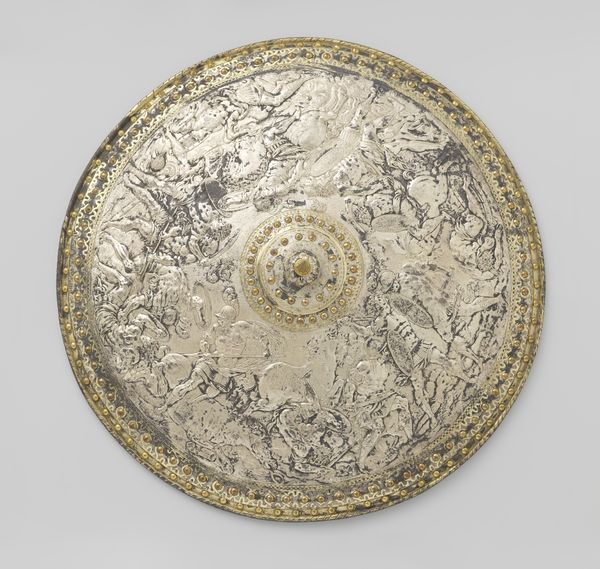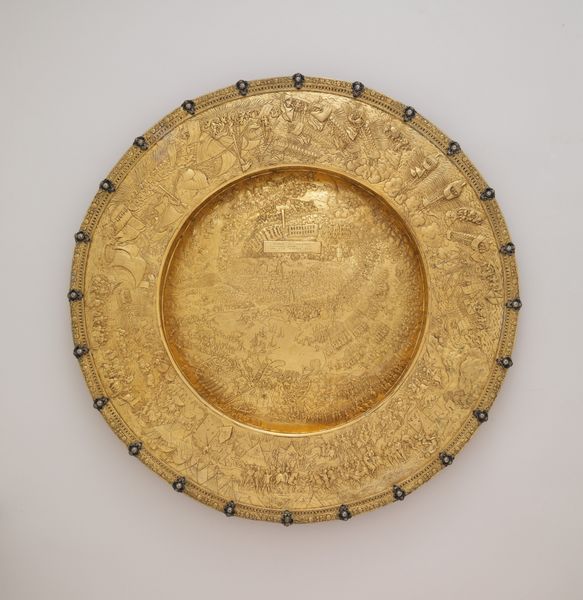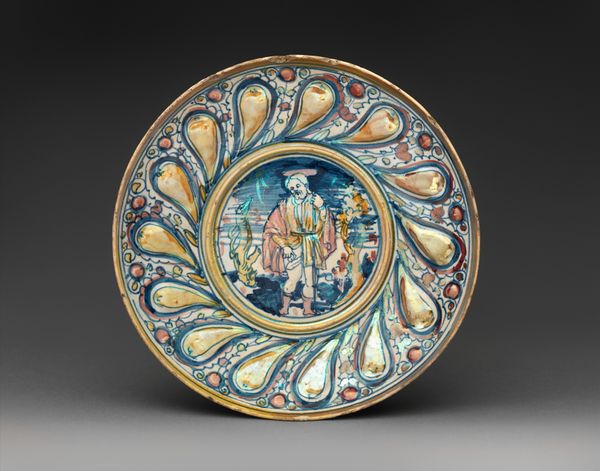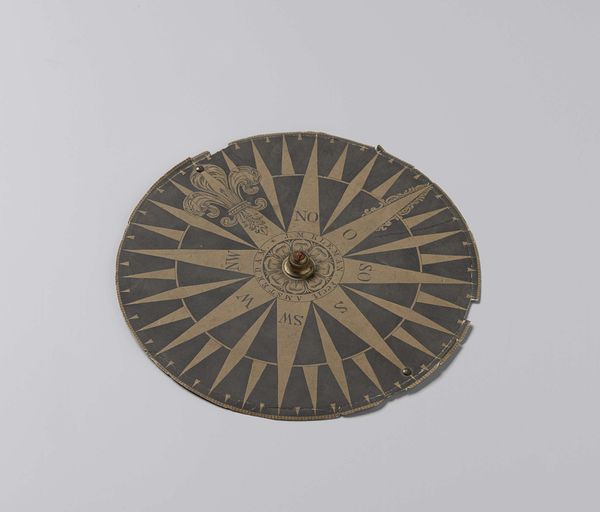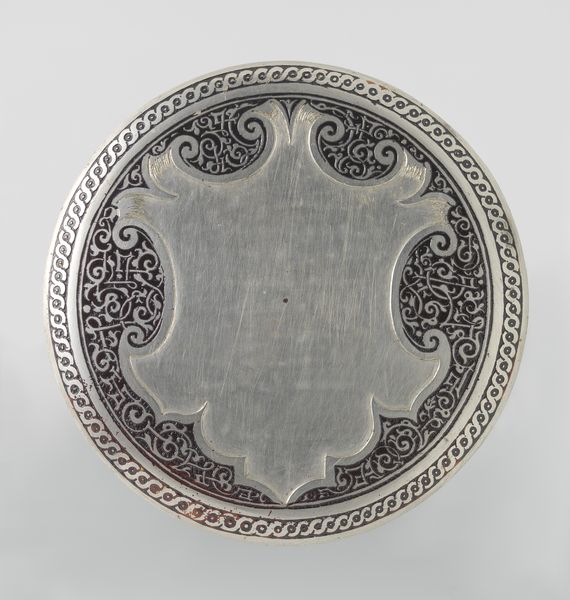
Hispano-Moresque Lusterware Plate with Griffin 1475 - 1500
0:00
0:00
ceramic, earthenware
#
decorative element
#
medieval
#
pottery
#
ceramic
#
earthenware
#
geometric
#
ceramic
#
islamic-art
#
earthenware
#
decorative-art
Dimensions: Diameter: 44.8 cm (17 5/8 in.)
Copyright: Public Domain
Curator: Looking at this Hispano-Moresque lusterware plate from around 1475-1500, currently housed at the Art Institute of Chicago, I'm immediately struck by its texture. Editor: It does feel quite grounded. I’m drawn to the central Griffin motif; it seems so commanding against the luster background, regal. It makes me wonder, what does it represent in this context? Curator: Griffins are a recurring theme, signaling power and protection, but I find it fascinating how the piece merges both Islamic and European techniques in ceramic production. It makes one consider cultural exchange, perhaps trade and migration across the Mediterranean, impacting both form and craft of objects like this. Editor: Absolutely. The central image really anchors that visual history. Beyond a royal association, a griffin could also be connected to Christian or pre-Christian imagery too, guarding treasure and representing vigilance, couldn't it? Was it a personal emblem of nobility? Curator: Quite likely. The lusterware is also critical to how we should consider this plate, too. Examining the making helps reveal more about patronage systems during the period: who commissioned it, who manufactured it. Islamic potters in Valencia, then under Christian rule, were famous for this technique that gives the earthenware a metallic sheen. This reflects evolving workshop practices between different artistic traditions in Medieval Iberia. Editor: I’m captivated by the plate’s blend of styles and histories; seeing how mythic beasts can persist across different cultures. They take on such weight as transmitters of cultural memory, from antiquity to late Medieval Europe. Curator: Thinking of such visual transfer reminds me how this object bears witness to hybrid practices across both workshop production and economic patronage. The plate stands as testimony to not just stylistic and technological interaction, but also material circulation across kingdoms and belief systems. Editor: For me, reflecting on the piece really demonstrates art's capacity to carry complex symbols, revealing cultural nuances and interpretations across the ages. Curator: Yes, a testament to both human labor and the complex social environments art-making reflects.
Comments
No comments
Be the first to comment and join the conversation on the ultimate creative platform.
